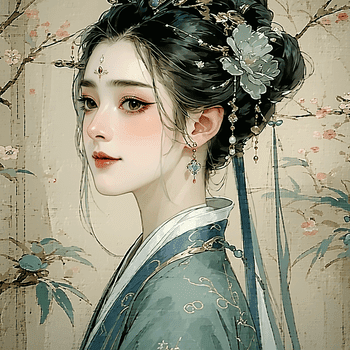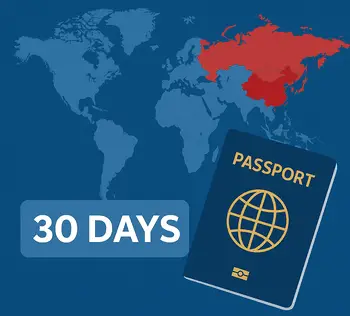
China’s gender dynamics reflect a complex interplay of Confucian philosophy, historical transformations, economic development, and modern social movements.
This comprehensive guide explores how gender roles vary across generations, regions, and social contexts—providing practical insights for expats, professionals, and travelers navigating Chinese social environments.
Historical Evolution of Gender Roles in China
Traditional Chinese gender roles have evolved through distinct historical periods:
| Historical Period | Key Characteristics | Impact on Gender Roles |
|---|---|---|
| Pre-Modern China (Before 1912) | Confucian patriarchy, feudal system | Strict gender hierarchy, women’s subordination codified in “Three Obediences and Four Virtues” |
| Republican Era (1912-1949) | Western influence, May Fourth Movement | First wave of women’s liberation, challenges to foot binding, calls for education |
| Mao Era (1949-1976) | Communist ideology, Cultural Revolution | “Women hold up half the sky,” promotion of gender equality in labor, though patriarchal structures persisted |
| Reform Era (1978-2000) | Economic liberalization, One-Child Policy | Mixed effects: increased economic opportunities alongside reemergence of traditional expectations |
| Contemporary China (2000-Present) | Digital economy, globalization | Rising feminism, pushback against discrimination, yet persistent structural inequality |
“The historical transformation of gender roles in China hasn’t been linear,” notes Dr. Leta Hong Fincher, author of Leftover Women: The Resurgence of Gender Inequality in China. “While women made significant gains during the communist era, market reforms have sometimes reinforced traditional gender expectations.”
Source: Women in Traditional China, Asia Society
Regional Differences in Gender Expectations
Gender norms vary significantly across China’s diverse regions:
| Region | Gender Role Characteristics | Notable Patterns |
|---|---|---|
| Urban Coastal Cities (Shanghai, Beijing, Shenzhen) | Most progressive attitudes, career-focused women common | Higher marriage ages, more egalitarian households, international influence |
| Second-Tier Cities (Chengdu, Xi’an, Hangzhou) | Blend of modern and traditional values | Growing female entrepreneurship, evolving dating practices |
| Rural Areas | More traditional gender expectations | Stronger family pressure for early marriage, son preference still evident |
| Ethnic Minority Regions | Distinct cultural traditions that sometimes differ from Han majority | Matrilineal practices in some Mosuo communities, unique marriage customs in Tibetan and Uyghur traditions |
“The experience of a young professional woman in Shanghai is radically different from that of her counterpart in a rural village in Gansu,” explains Dr. Harriet Evans, Professor of Chinese Cultural Studies at the University of Westminster. “These differences are sometimes more significant than generational gaps.”
Source: Gender and Sexuality in Modern Chinese History, Cambridge University Press
Generational Perspectives on Gender
Different generations in China hold varying views on gender roles:
| Generation | Born | Key Characteristics | Gender Attitudes |
|---|---|---|---|
| Post-50s/60s | 1950-1969 | Experienced Cultural Revolution | Often hold traditional views, but supported daughters’ education |
| Post-70s | 1970-1979 | First generation under One-Child Policy | Caught between tradition and modernity, pioneered career women |
| Post-80s | 1980-1989 | China’s economic rise, often only children | More egalitarian but face strong marriage pressure |
| Post-90s | 1990-1999 | Digital natives, global exposure | Challenge gender stereotypes, delay marriage, embrace diversity |
| Post-00s | 2000-2009 | Social media generation | Most progressive views, increasingly question binary gender norms |
According to a 2023 survey by the China Youth Daily, 72% of post-90s and post-00s respondents supported equal division of household responsibilities, compared to 45% of post-60s and post-70s respondents.
Source: Blue Book of Youth: Annual Report on Development of Chinese Youth (2022)
Workplace Gender Dynamics
Despite significant progress, workplace gender disparities persist in several areas:
| Aspect | Current Status | Recent Developments |
|---|---|---|
| Leadership Representation | Women hold 9.7% of board seats in Chinese companies (2023) | Increased from 5.6% in 2013, though still below global average |
| Income Gap | Women earn 77.1% of what men earn for similar positions | Gap narrowing in tech and finance sectors, widening in traditional industries |
| Employment Discrimination | 58% of women report experiencing gender-based hiring bias | New laws prohibit pregnancy discrimination, though enforcement varies |
| Family Leave Policies | Maternity leave: 98-158 days (varies by province); Paternity leave: 7-30 days | Progressive companies offering more balanced parental leave |
“Gender discrimination in hiring remains prevalent despite legal protections,” notes Feng Yuan, co-founder of Equality Beijing. “Many young women are still asked about marriage plans during interviews, even though such questions are technically illegal.”
Sources: World Economic Forum Gender Gap Report 2023, China Women’s Development Program (2021-2030)
Marriage and Family Expectations
Marriage remains central to Chinese society, but attitudes are evolving:
| Aspect | Traditional Expectations | Modern Trends |
|---|---|---|
| Marriage Age | Early marriage (women: early 20s, men: mid-20s) | Average first marriage age in major cities: women (29.4), men (31.5) |
| Dating Dynamics | Family introduction, practical considerations | Dating apps popular among urban youth, individual choice emphasized |
| Housing/Financial Expectations | Men expected to provide housing, car | “AA制” (Dutch pay) increasingly common in urban areas, though men still face pressure to own property |
| Division of Care Work | Women primarily responsible for children, aging parents | Men increasingly involved in childrearing, though women still perform 2.5x more unpaid care work |
Professor Xiaoying Wang of the Beijing Normal University notes, “Young Chinese women today are redefining what constitutes a desirable partner. Financial stability remains important, but personal compatibility and willingness to share domestic responsibilities are increasingly valued.”
Source: China Statistical Yearbook 2023, Chinese Academy of Social Sciences Family Development Report
LGBTQ+ Perspectives and Changing Attitudes
Gender role discussions increasingly include LGBTQ+ experiences:
| Aspect | Current Status | Recent Developments |
|---|---|---|
| Legal Recognition | No same-sex marriage or civil unions | Growing public support (especially among youth) for legal protections |
| Social Acceptance | Higher in urban areas, generational divide evident | 54% of urban youth express support for LGBTQ+ rights (2023 survey) |
| Media Representation | Limited, subject to censorship | Growing visibility on social media platforms like Douyin and Bilibili |
| Community Organizations | Operate with limited visibility | Organizations like LGBT Center Beijing provide support and resources |
“For LGBTQ+ Chinese, negotiating gender expectations involves additional complexities,” explains Dr. Timothy Hildebrandt, researcher at the London School of Economics. “Many navigate dual identities across different social contexts.”
Source: Being LGBTQ+ in China: A Country Profile, Stonewall Global Workplace Briefings
Media Influence on Gender Perceptions
Chinese media plays a powerful role in shaping gender norms:
| Media Type | Common Gender Portrayals | Emerging Trends |
|---|---|---|
| Television Dramas | Traditional family roles, romance narratives | Some shows featuring independent women, complex male characters |
| Social Media | Beauty standards, “Little Fresh Meat” male celebrities | Rising feminist discourse, body positivity movements |
| Gaming | Gender stereotypes in character design | More diverse female protagonists, though hypersexualization persists |
| Government Messaging | Traditional family values | Mixed signals: promoting childbirth while supporting women’s education |
The popular drama series Nothing But Thirty (《三十而已》) garnered praise for its realistic portrayal of professional women’s struggles in modern China, attracting over 17 billion views on streaming platforms.
Source: China Media Project, Hong Kong University, What’s on Weibo
Legal Framework and Policy Developments
China’s legal system addresses gender equality through various mechanisms:
| Law/Policy | Purpose | Implementation Reality |
|---|---|---|
| Constitution | Guarantees equal rights for women | Broad principles with varying enforcement |
| Law on the Protection of Women’s Rights and Interests (revised 2022) | Prohibits discrimination, harassment | Strengthened definitions of sexual harassment, improved reporting mechanisms |
| Anti-Domestic Violence Law (2016) | Protects against family violence | Implementation challenges, especially in rural areas |
| Three-Child Policy (2021) | Replaces previous restrictions | Concerns about reinforcing traditional roles for women |
“The legal framework for gender equality in China is relatively robust,” notes legal scholar Prof. Lü Pin from New York University. “The challenge lies in implementation, social attitudes, and structural barriers.”
Source: All-China Women’s Federation, China’s National Human Rights Action Plan (2021-2025)
Practical Guidance for Expats and Travelers
Understanding gender expectations can help foreigners navigate social and professional contexts:
| Setting | Cultural Considerations | Practical Tips |
|---|---|---|
| Business Meetings | Gender dynamics may vary by industry and region | Address senior figures first regardless of gender; business cards exchanged with both hands |
| Social Gatherings | Seating arrangements may follow status hierarchy | Follow host’s lead for seating; observe local dining etiquette |
| Professional Networking | Relationship-building (关系, guanxi) essential | Exchange contacts on WeChat; be aware of different communication styles |
| Everyday Interactions | Gender roles more fluid in younger, urban settings | Adjust expectations based on region and generation of people you’re interacting with |
“Understanding nuance is key,” advises Zhang Wei, cross-cultural consultant at China Crossroads. “Beijing tech startups might have gender dynamics similar to Silicon Valley, while traditional state-owned enterprises might maintain more hierarchical structures.”
Challenges and Movements for Change
Both women and men face distinct pressures in contemporary China:
Challenges for Women
- Employment discrimination: Particularly during childbearing years
- “Leftover women” (剩女) stigma: Unmarried women over 27 face social pressure
- Beauty standards: Expectations for thinness, youth, and specific features
- Double burden: Managing career and family responsibilities
Challenges for Men
- Financial pressure: Expectations to own property before marriage
- Career success: Strong social emphasis on professional achievement
- Emotional restraint: Traditional masculinity discourages emotional expression
- Family responsibility: Expectations to care for aging parents
“Both genders face restrictive expectations,” explains sociologist Dr. Li Yinhe from the Chinese Academy of Social Sciences. “Men’s struggles with housing costs and career pressure are interconnected with women’s experiences of marriage markets and workplace discrimination.”
Source: Institute of Sociology, Chinese Academy of Social Sciences
Feminist Movements in Modern China
Advocacy for gender equality takes various forms in contemporary China:
| Movement | Focus | Impact |
|---|---|---|
| Social Media Activism | Online awareness campaigns, hashtag movements | Raised visibility of issues like sexual harassment, though subject to censorship |
| Academic Feminism | Gender studies programs, research initiatives | Growing scholarly work on gender, though still developing compared to Western institutions |
| Grassroots Organizations | Community support, legal aid, education | Organizations like Beijing Yuanzhong Gender Development Center advocate for practical change |
| Individual Activism | Personal advocacy, challenging norms in daily life | Growing visibility of role models rejecting traditional expectations |
The #MeToo movement gained momentum in China in 2018, with cases against professors, media figures, and business leaders, though many discussions eventually faced censorship on social platforms.
Source: Feminist Voices Archive, China Development Brief
Conclusion
Understanding gender roles in Chinese culture requires recognizing diversity, dynamism, and context.
While traditional values continue to influence expectations, rapid social and economic change is creating new possibilities and challenges across generations and regions.
For those engaging with Chinese culture—whether as expatriates, business professionals, or travelers—approaching gender dynamics with cultural sensitivity, awareness of regional differences, and recognition of individual diversity will foster more meaningful connections and effective interactions.
As China continues to evolve, so too will gender roles and expectations, shaped by economic factors, policy decisions, global influences, and the changing aspirations of Chinese citizens themselves.
Further Resources
- All-China Women’s Federation – Official government organization focused on women’s issues
- UN Women China – United Nations programs supporting gender equality in China
- What’s on Weibo – Analysis of gender-related social media trends
- SupChina’s Women and China Series – Articles exploring women’s experiences in modern China
- NGO Directory by China Development Brief – Database of organizations working on gender equality initiatives



